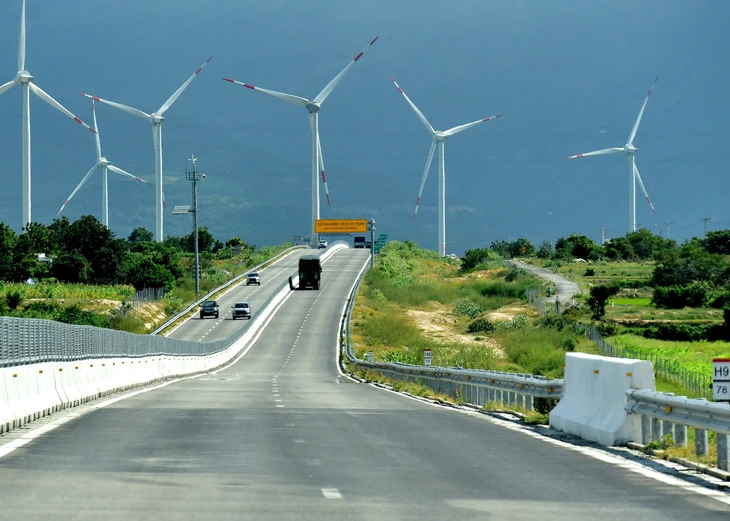
Renewable energy projects have had their capacity cut - Photo: T.TR.
In the information sent to power generation and grid management units about electricity supply operations in recent times, NSMO stated the reason for having to cut the capacity of the plants.
Hydroelectric and wind power sources increase
According to NSMO, statistics from the National Hydrometeorological Service show that many record rains, along with the complicated developments of storms and tropical depressions, have directly affected the operation of the national power system.
Due to the impact of storm and storm circulation No. 13, the water flow to hydroelectric reservoirs increased, causing 80/122 hydroelectric reservoirs with a total hydroelectric capacity to discharge flood water up to 16,000 MW on November 7.
At the same time, wind power also increased, reaching 3,400-4,000 MW, 2,000-3,000 MW higher than the impact of the storm. The above factors caused the national power system to experience a state of excess power, overloading for a long time during the day and continuously during the past October and November.
In the context of difficult operations, to ensure source/load balance and keep the system frequency within the allowable range, NSMO has continuously monitored and adjusted the mobilization of power sources. In particular, NSMO has to continuously monitor and adjust the mobilization of power sources.
The NSMO has to make difficult dispatch decisions, including reducing the mobilization of both hydropower plants that are releasing water and renewable energy sources including wind and solar power to ensure safe operation of the national system and power plants.
At the same time, to prepare for importing electricity from Laos according to the agreement between the two governments , on November 9 and 10, the National Power Transmission Corporation will cut off power to construct the 220kV Tuong Duong - Do Luong and Do Luong - Nam Cam lines.
According to NSMO, this is a major task requiring the simultaneous cutting of power to four 220kV lines. This will affect the power generation capacity of hydropower plants in Nghe An area, power plants in Laos and the power supply to the loads of Nghe An Electricity Company.
Next, in December 2025, the units are expected to continue to carry out the construction of the 500kV Quang Tri transformer station connection to continue to increase import capacity and release the capacity of power sources in the region to ensure electricity supply for 2026 and the following years.
Not to mention, the Department of Hydrometeorology forecasts that there will be about 3 storms and tropical depressions active in the East Sea, of which 1-2 storms are likely to affect Vietnam, causing rain and greatly impacting the operation of the national power system.
Serious overcapacity affects the system
In a report sent to the Ministry of Industry and Trade, NSMO also said that with the difficult system operation situation, along with the pressure to mobilize BOT power plants to ensure the committed annual output, in the days before and during the recent storm No. 13, the power system fell into an extreme operating state, with serious excess power and occurring in many cycles during the day.
Therefore, to ensure source/load balance, keep the national power system frequency within the allowable range, and ensure absolutely safe operation of the national power system, NSMO has had to continuously monitor and adjust the mobilization of power sources, especially at some times when it had to reduce mobilization, including hydropower plants that were releasing floodwaters and renewable energy sources (wind power, solar power).
Immediately after the storm weakened and no longer posed a danger to system operations, NSMO decided to stop the backup of 1,650 MW of coal-fired thermal power plants in the North to limit the situation of excess power.
In the coming weekends, the load demand will continue to decrease. To limit the serious surplus of power sources, NSMO will continue to calculate and balance to stop using additional coal-fired thermal power sources to ensure safe, stable and reliable power supply for the power system for these days as well as in the coming time.
To ensure safe and stable operation of the national power system during the period of many unusual weather factors, and to ensure the progress of key national projects, NSMO expressed its hope for sharing from power generation and transmission units to ensure safe, stable and continuous operation.
Source: https://tuoitre.vn/thua-nguon-dien-khien-dieu-do-quoc-gia-phai-cat-giam-cong-suat-nhieu-nha-may-20251110095641782.htm


![[Photo] Prime Minister Pham Minh Chinh attends the Patriotic Emulation Congress of the Ministry of Foreign Affairs for the 2025-2030 period](https://vphoto.vietnam.vn/thumb/1200x675/vietnam/resource/IMAGE/2025/11/10/1762762603245_dsc-1428-jpg.webp)

![[Photo] Prime Minister Pham Minh Chinh attends the annual Vietnam Business Forum](https://vphoto.vietnam.vn/thumb/1200x675/vietnam/resource/IMAGE/2025/11/10/1762780307172_dsc-1710-jpg.webp)



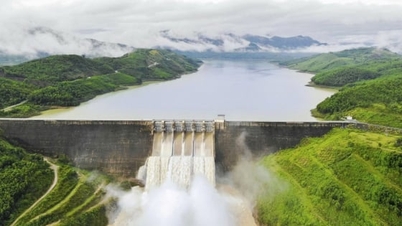

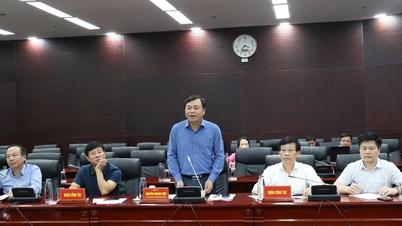

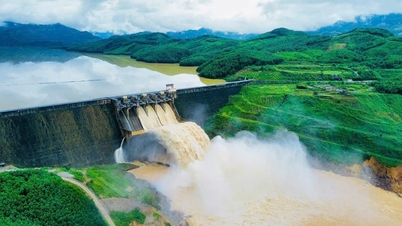































































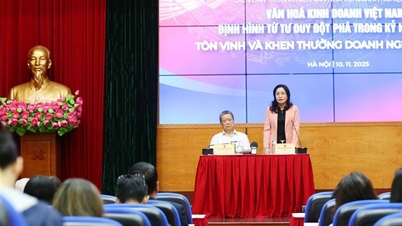















![Dong Nai OCOP transition: [Article 3] Linking tourism with OCOP product consumption](https://vphoto.vietnam.vn/thumb/402x226/vietnam/resource/IMAGE/2025/11/10/1762739199309_1324-2740-7_n-162543_981.jpeg)











Comment (0)